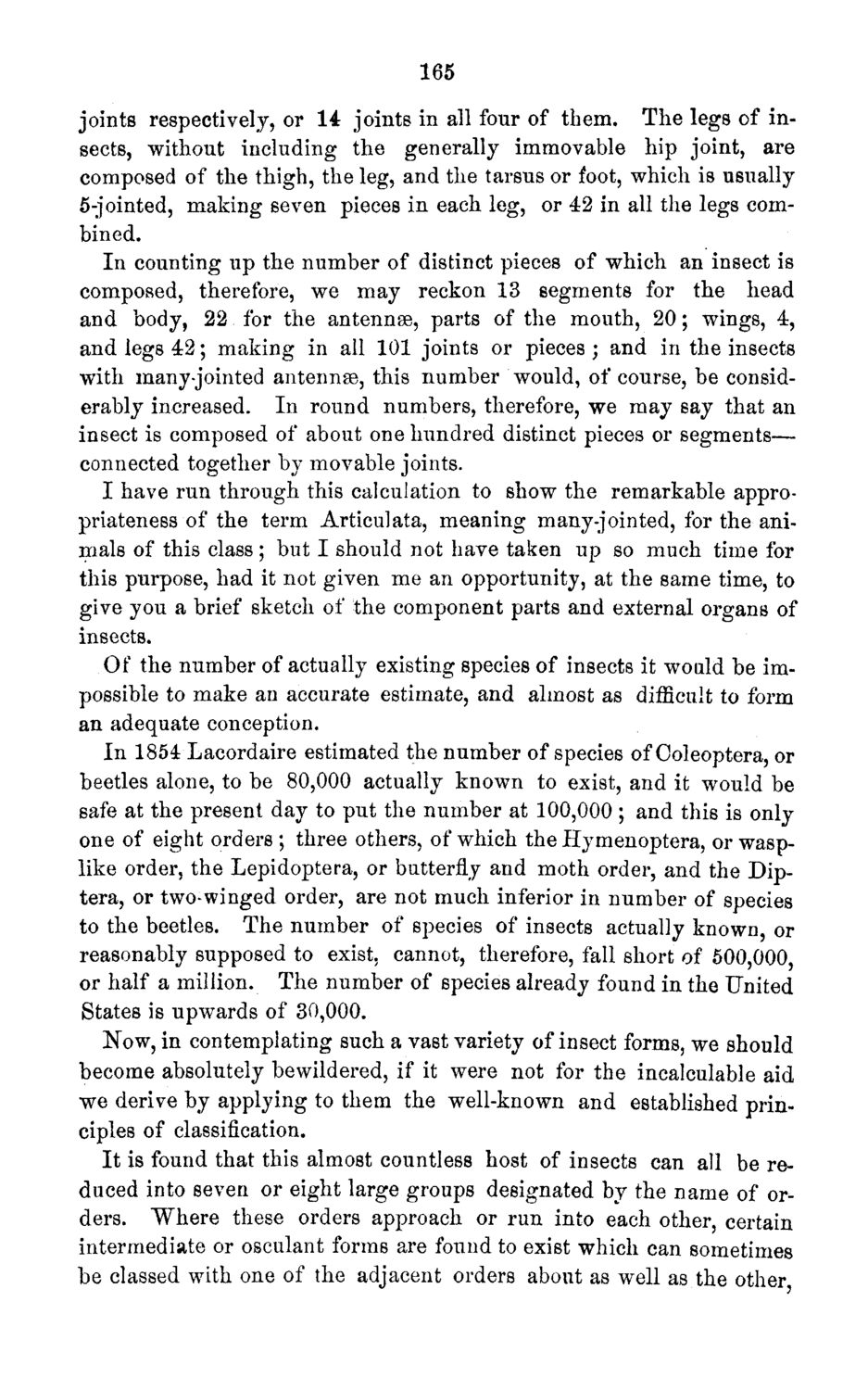| |
| |
Caption: Board of Trustees Minutes - 1871
This is a reduced-resolution page image for fast online browsing.

EXTRACTED TEXT FROM PAGE:
165 joints respectively, or 14 joints in all four of them. The legs of insects, without including the generally immovable hip joint, are composed of the thigh, the leg, and the tarsus or foot, which is usually 5-jointed, making seven pieces in each leg, or 42 in all the legs combined. In counting up the number of distinct pieces of which an insect is composed, therefore, we may reckon 13 segments for the head and body, 22 for the antenna, parts of the mouth, 2 0 ; wings, 4, and legs 4 2 ; making in all 101 joints or pieces ; and in the insects with many-jointed antennse, this number would, of course, be considerably increased. In round numbers, therefore, we may say that an insect is composed of about one hundred distinct pieces or segments— connected together by movable joints. I have run through this calculation to show the remarkable appropriateness of the term Articulata, meaning many-jointed, for the animals of this class ; but I should not have taken up so much time for this purpose, had it not given me an opportunity, at the same time, to give you a brief sketch of the component parts and external organs of insects. Of the number of actually existing species of insects it would be impossible to make an accurate estimate, and almost as difficult to form an adequate conception. In 1854 Lacordaire estimated the number of species of Coleoptera, or beetles alone, to be 80,000 actually known to exist, and it would be safe at the present day to put the number at 100,000 ; and this is only one of eight orders ; three others, of which the Hymenoptera, or wasplike order, the Lepidoptera, or butterfly and moth order, and the Diptera, or two-winged order, are not much inferior in number of species to the beetles. The number of species of insects actually known, or reasonably supposed to exist, cannot, therefore, fall short of 500,000, or half a million. The number of species already found in the United States is upwards of 30,000. Now, in contemplating such a vast variety of insect forms, we should become absolutely bewildered, if it were not for the incalculable aid we derive by applying to them the well-known and established principles of classification. It is found that this almost countless host of insects can all be reduced into seven or eight large groups designated by the name of orders. Where these orders approach or run into each other, certain intermediate or osculant forms are found to exist which can sometimes be classed with one of the adjacent orders about as well as the other
| |